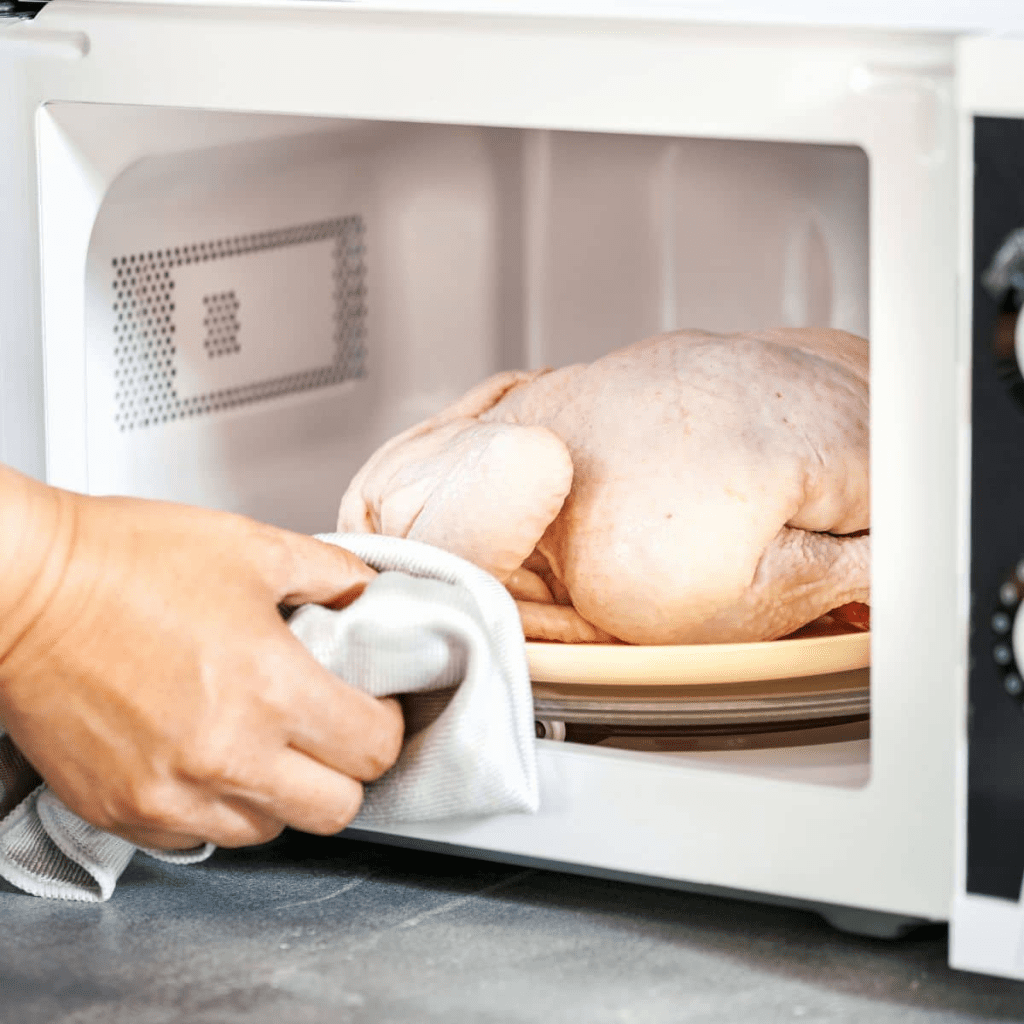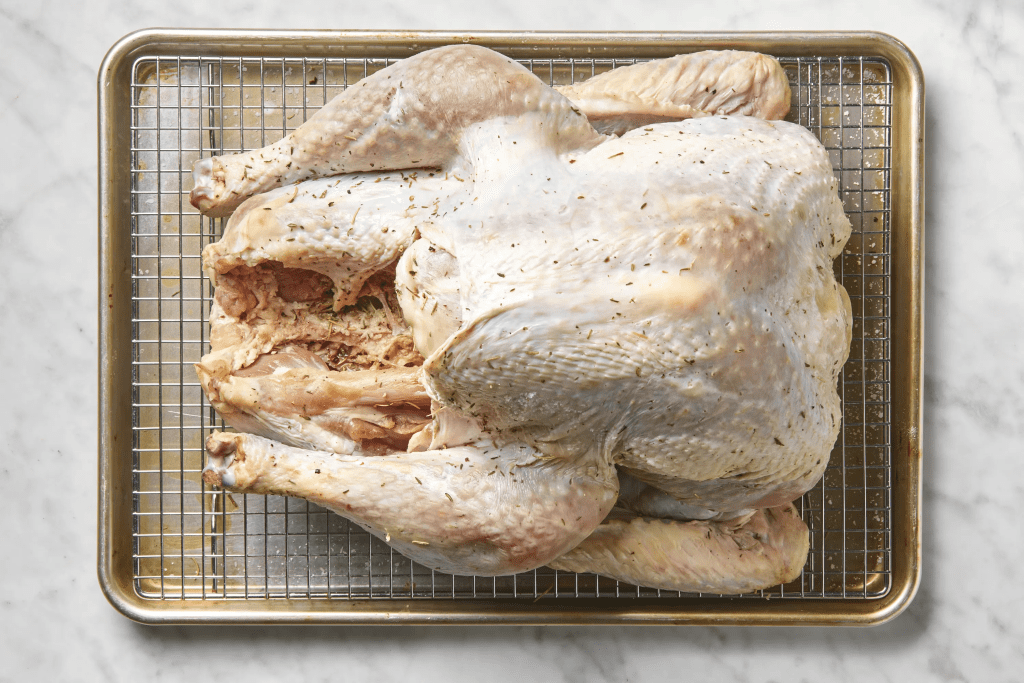When the holiday season rolls around, many of us are busy preparing for big meals, and thawing a turkey often becomes one of the first tasks on the list. But when it comes to thawing methods, there’s often some confusion—and even conflicting advice. One common suggestion is to leave your turkey out on the counter overnight, but is this a safe practice? Let’s dive into the details of turkey thawing and explore the safest methods to avoid any potential food safety issues.
The Importance of Safe Thawing Methods for Turkey

Thawing a turkey is an essential step in preparing a delicious holiday meal, but it’s also a critical point where food safety can be compromised. The primary concern when thawing poultry is to avoid allowing it to stay in the so-called “danger zone”—the temperature range between 40°F and 140°F. Within this range, bacteria can grow rapidly, making the turkey unsafe to eat. But how do we avoid this risk while ensuring our turkey is properly thawed and ready for cooking?
Why Thawing a Turkey on the Counter is Risky
Leaving a turkey out on the kitchen counter to thaw might seem convenient, especially if you’re in a rush, but it can create a breeding ground for harmful bacteria. When a turkey sits at room temperature, the outer layers begin to thaw, but the inside of the bird remains frozen. This uneven thawing means that the outer parts of the turkey could reach temperatures that allow bacteria to thrive, while the inside is still too cold to do the same.
According to food safety experts, this increases the risk of foodborne illnesses such as salmonella or campylobacter. These bacteria can cause serious health issues, and thawing a turkey improperly is one of the easiest ways to introduce them to your meal.
The Dangers of Leaving a Turkey Out Overnight
Leaving a frozen turkey out overnight on the counter may seem harmless, but it is considered dangerous by food safety authorities like the USDA (United States Department of Agriculture) and the CDC (Centers for Disease Control and Prevention). In fact, it’s highly discouraged. Even if the room temperature feels relatively cool, the turkey will still be exposed to bacteria-promoting conditions, which can quickly lead to contamination.
The longer the turkey sits in the danger zone (i.e., at temperatures above 40°F), the higher the risk of bacteria multiplying. This can result in an unsafe meal, even if you cook the turkey thoroughly. It’s important to remember that while cooking can kill most bacteria, some bacteria produce toxins that are heat-resistant. This means that cooking your turkey won’t necessarily eliminate the risk.
Safer Thawing Methods for Your Turkey

Now that we’ve discussed why counter thawing isn’t a good idea, let’s look at safer alternatives. There are three methods for thawing your turkey that are recommended by food safety experts:
1. Refrigerator Thawing: The Safest Method
The safest and most recommended method for thawing a turkey is in the refrigerator. Thawing the turkey in a controlled, cool environment (below 40°F) keeps the bird out of the danger zone. Simply place the turkey in its original packaging on a tray in the fridge, and allow it to thaw gradually.
How long will it take? For every 4-5 pounds of turkey, you’ll need about 24 hours in the refrigerator. So if you have a 16-pound turkey, plan on 4 days for it to fully thaw. It’s a slow process, but it’s the safest way to ensure your bird is thawed and bacteria-free.
2. Cold Water Thawing: A Faster Option
If you’re short on time, cold water thawing is a quicker method. This method requires submerging the turkey (in its original packaging) in cold water. Change the water every 30 minutes to keep the water cold and prevent bacteria growth.
Cold water thawing requires about 30 minutes per pound, so a 12-pound turkey will take approximately 6 hours to thaw. While it’s faster than refrigerator thawing, it does require more attention. Be sure to plan enough time for the turkey to fully thaw, and cook it immediately after thawing to ensure it’s safe.
3. Microwave Thawing: A Quick Fix for Smaller Birds
Microwave thawing is an option for smaller turkeys (generally those under 10 pounds). Use the microwave’s defrost function, but keep in mind that the turkey will need to be cooked immediately after thawing. The microwave method is quick, but it doesn’t always ensure even thawing, which is why it’s best for smaller birds.
What Experts Say About Counter Thawing
Food safety experts, including those from the USDA and CDC, strongly advise against thawing a turkey on the counter. Experts emphasize that while this method has been a common practice for years, our understanding of food safety has evolved, and the risks associated with thawing at room temperature are too significant to ignore.
In fact, the USDA warns that leaving poultry at room temperature for more than 2 hours can increase the risk of bacterial growth. The best course of action is to use one of the safe thawing methods mentioned above, whether that’s refrigerator thawing, cold water thawing, or microwave thawing.

Debunking Common Turkey Thawing Myths
There are a few myths about turkey thawing that still circulate, so let’s clear them up:
- Myth #1: “It’s okay to thaw a turkey on the counter if the weather is cool.”
Even in cooler temperatures, the interior of the turkey can remain frozen while the outer parts thaw, creating a bacteria-friendly environment. Always stick to safe thawing methods. - Myth #2: “Cooking the turkey will kill all bacteria, so it doesn’t matter how it’s thawed.”
While cooking does kill most bacteria, bacteria toxins may still pose a risk, as some are heat-resistant. Safe thawing is essential to avoid toxins in your food.
Conclusion: How to Thaw Your Turkey Safely
While leaving a turkey out to thaw on the counter overnight might seem convenient, it’s not worth the risk. Instead, opt for safer methods like refrigerator thawing, cold water thawing, or microwave thawing. These methods ensure that your turkey remains at safe temperatures, reducing the risk of foodborne illnesses and allowing you to prepare a delicious holiday meal without worry.
Planning ahead and allowing enough time for proper thawing will help you avoid last-minute stress and ensure your turkey is safe to cook. Remember, food safety is key to a happy, healthy holiday meal!


